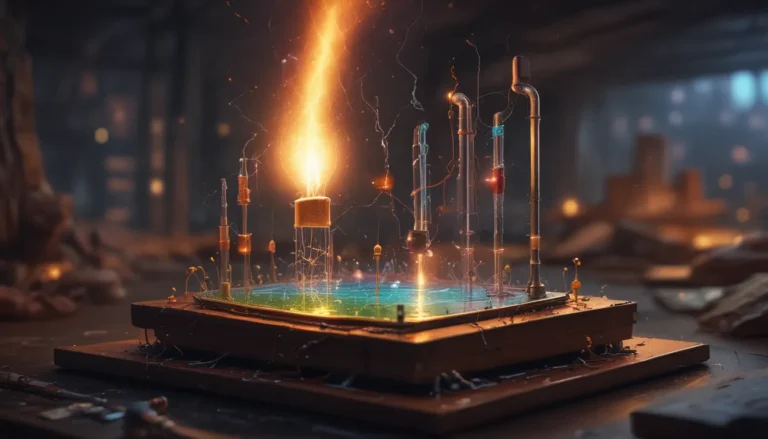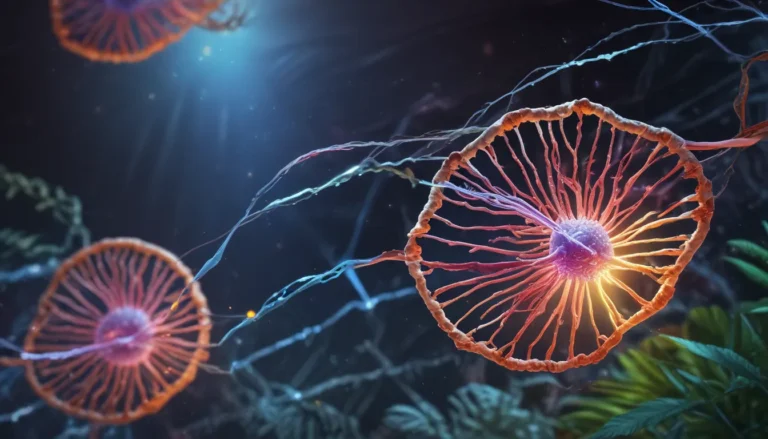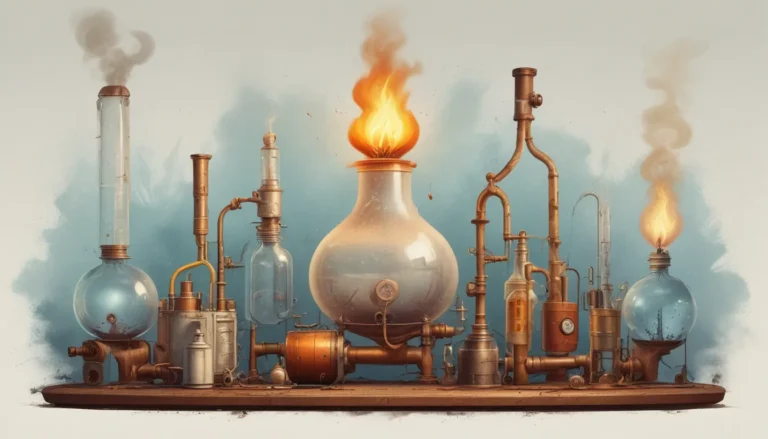A Note About Images: The images used in our articles are for illustration purposes only and may not exactly match the content. They are meant to engage readers, but the text should be relied upon for accurate information.
Chemistry enthusiasts and students alike are constantly intrigued by the complexities and nuances of chemical reactions. The concept of reaction coordinate plays a significant role in understanding these reactions, shedding light on the path taken by reactions from reactants to products. In this article, we will delve into 14 captivating facts about reaction coordinate that will enhance your knowledge and appreciation for this fundamental concept in chemistry.
Demystifying Reaction Coordinate:
- Reaction coordinate serves as a roadmap illustrating the trajectory of a chemical reaction and unveiling the energy changes that occur during the process. It acts as a visual aid to comprehend the intricate mechanisms behind reactions.
- Reaction coordinate diagrams are akin to secret codes that unlock the mysteries of chemical reactions, providing scientists with valuable insights into reaction kinetics and factors influencing reaction rates.
Understanding the Essence of Reaction Coordinate:
When discussing reaction coordinate, it is crucial to grasp its definition and significance in the realm of chemistry.
Reaction Coordinate: Refers to the path followed by a chemical reaction from reactants to products, providing a visual representation of energy changes during the reaction.
The Role of Reaction Coordinate: The reaction coordinate aids in understanding the progress and mechanism of a chemical reaction, enabling scientists to determine essential factors such as activation energy, reaction rate, and transition states.
React also: 18 Extraordinary Facts About Degenerate Orbitals
Unraveling Key Components of Reaction Coordinate:
Several components and concepts are intertwined with reaction coordinate, each contributing to a deeper understanding of chemical reactions.
Transition State: A high-energy state occurring at the peak of the reaction coordinate diagram, marking the moment when reactants transition into products.
Activation Energy: The energy barrier that must be surpassed for a reaction to proceed, representing the energy disparity between reactants and the transition state.
Reaction Coordinate and Equilibrium: Assists in determining the equilibrium position in a chemical reaction and offers insights into the overall energy changes and system stability.
Reaction Coordinate and Catalysts: Catalysts play a pivotal role in lowering the activation energy of a reaction, facilitating a faster and more efficient reaction pathway with reduced energy barriers.
Reaction Coordinate and Rate of Reaction: Provides valuable insights into the rate of a chemical reaction by analyzing energy changes along the pathway, enabling scientists to determine the reaction speed.
Reaction Coordinate and Reaction Mechanisms: Essential for understanding the step-by-step sequence of elementary reactions that culminate in the overall reaction, aiding in the prediction and comprehension of reaction mechanisms.
Discover: 18 Captivating Facts About Amphiprotic Species
Practical Applications and Implications of Reaction Coordinate:
Understanding reaction coordinate extends beyond theoretical knowledge, offering practical applications in various fields such as pharmaceuticals, materials science, and environmental research.
Reaction Coordinate and Activation Complex: Activation complexes, fleeting species at the transition state of a chemical reaction, play a crucial role in determining the reaction pathway and product formation.
Reaction Coordinate and Gibbs Free Energy: Allows for the calculation of Gibbs free energy, a metric indicating the maximum useful work attainable from a reaction, aiding in determining reaction spontaneity and feasibility.
Reaction Coordinate and Reaction Pathway: Depicts the specific sequence of steps followed by a reaction from reactants to products, offering insights into intermediates and intermediary steps.
Reaction Coordinate and Reaction Kinetics: Interconnected with reaction kinetics, facilitating the analysis of factors influencing reaction rates such as temperature, concentration, and catalysts.
Embracing the Significance of Reaction Coordinate:
In conclusion, delving into the realm of reaction coordinate unveils a plethora of insights crucial for understanding and optimizing chemical reactions. From activation energy to reaction mechanisms, studying the reaction coordinate offers a comprehensive perspective on the intricacies of chemical processes. By manipulating reaction conditions and analyzing corresponding changes in the reaction coordinate, scientists can gain profound insights into reaction outcomes and mechanism optimization. Reaction coordinate stands as a valuable tool in the arsenal of chemists, providing a deeper understanding of chemical reactions’ complexities and applications across various scientific domains.
FAQs: Exploring Common Queries About Reaction Coordinate
-
What is a reaction coordinate?
A reaction coordinate serves as a representation of the energy changes occurring during a chemical reaction, depicting the progression from reactants to products along a specific pathway. -
How is the reaction coordinate determined?
The reaction coordinate is established by analyzing changes in energy as the reaction advances, involving the examination of potential energy surfaces and identification of key transition states and intermediates. -
Why is the reaction coordinate important?
The reaction coordinate holds significance in understanding the reaction mechanism, activation energy, and intermediates involved in chemical reactions, providing insights into factors influencing reaction rates and outcomes. -
Can the reaction coordinate be altered?
The reaction coordinate can be manipulated by modifying reaction conditions such as temperature, pressure, or catalyst presence, impacting energy barriers and intermediates along the reaction pathway. -
What are some practical applications of studying the reaction coordinate?
Studying the reaction coordinate is essential in drug development, materials science, and environmental research fields, aiding in designing efficient synthetic routes, understanding catalysts, and predicting reaction outcomes.
Elevating Your Chemistry Knowledge:
Unraveling the captivating facts about reaction coordinate invites you to explore the intricate world of chemical reactions and their underlying mechanisms. By deepening your understanding of reaction coordinate, you embark on a journey towards mastering the complexities of chemical kinetics and reaction optimization. Join us in our quest to decipher the mysteries of reaction coordinate and unlock the potential of chemistry’s captivating realm.
Your Feedback Matters:
Our commitment to delivering trustworthy and engaging content is at the core of our mission. Each fact on our platform is contributed by real users like you, enriching our knowledge base with diverse insights and information. Through meticulous editorial review, we ensure the accuracy and reliability of the facts we share, striving to provide a blend of fascination and credibility. Trust in our dedication to quality and authenticity as you delve into the captivating world of reaction coordinate.
By embracing the essence of reaction coordinate, you equip yourself with a powerful tool for unraveling the intricacies of chemical reactions and embarking on a journey towards enhanced scientific understanding and innovation. Join us in exploring the wonders of reaction coordinate and unveiling the mysteries of chemical kinetics and reaction dynamics.






